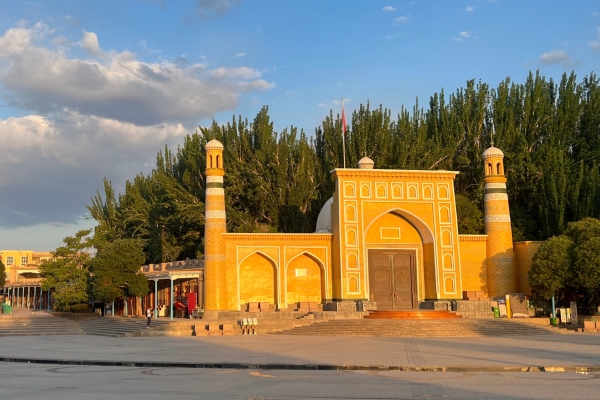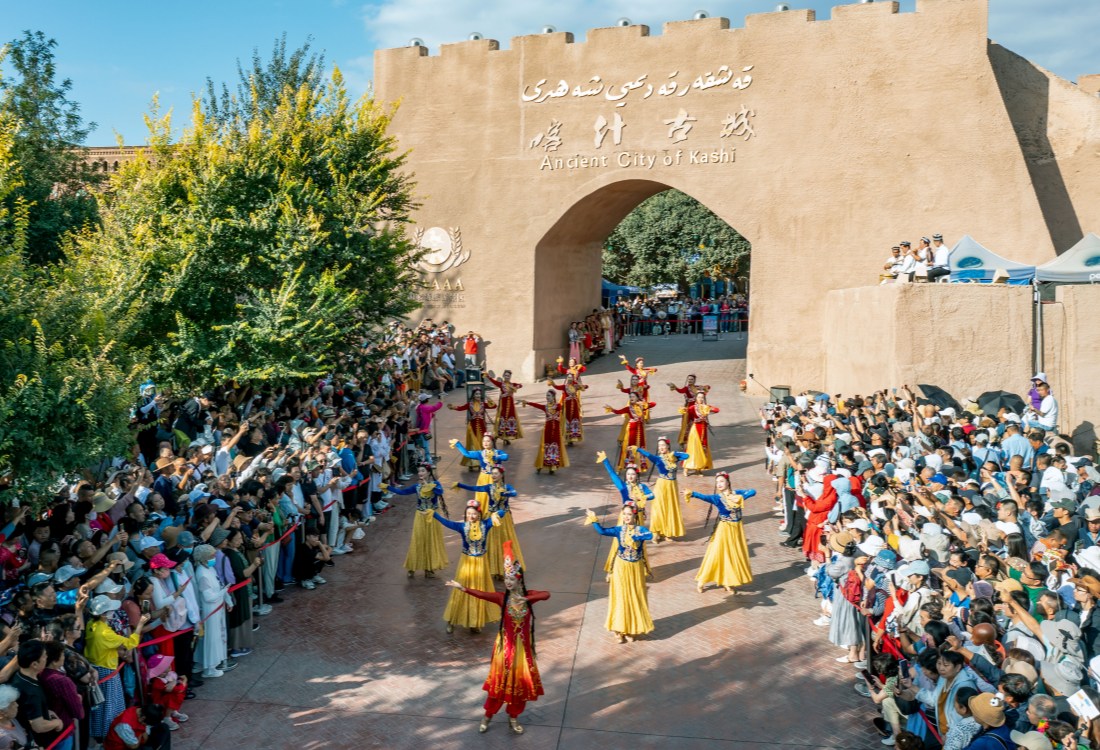Table of Contents
ToggleXinjiang, in western China, is home to the Uyghur people, a Turkic ethnic group with deep historical roots. As the heart of the Silk Road, the region has long been a crossroads of diverse cultures, religions, and traditions. The Uyghurs, with their distinct language, customs, and vibrant traditions, continue to shape Xinjiang’s cultural identity.
This article explores the rich culture and traditions of the Uyghur community in the context of Xinjiang’s diverse landscape.
The History and Heritage of the Uyghur People
The Uyghur people have a history spanning over 2,000 years, deeply entwined with the development of the Silk Road. As a major trading route, the Silk Road connected the East to the West, facilitating the exchange of goods, ideas, and religions. The Uyghur kingdom once ruled vast parts of Central Asia, and their influence can still be seen in the architecture, art, and culture of the region today.
Historically, the Uyghur people have lived in what is now Xinjiang, China’s largest and most resource-rich province. The blend of Persian, Arabic, Turkic, and Chinese influences has left a unique cultural footprint, with elements of these diverse cultures visible in Uyghur art, literature, cuisine, and music.
Language: The Heart of Uyghur Identity
The Uyghur language is a Turkic language, part of the larger Altaic language family. It is written in a modified Arabic script and is the primary language spoken by the Uyghur people in Xinjiang. Though it has adopted a range of Arabic and Persian influences, the language retains its distinct Turkic roots.
Uyghur literature, poetry, and storytelling play an important role in preserving their cultural heritage. Over the centuries, the Uyghur people have produced a wealth of classical literature, from epic poems to philosophical texts, many of which draw from the diverse influences of Islam and local traditions. Today, Uyghur writers continue to innovate, blending traditional forms with modern narratives.

Religion: Islam and Spirituality in Uyghur Life
Islam, particularly Sunni Islam, is the dominant religion among the Uyghur people. The majority of Uyghurs adhere to Islamic traditions, with a significant number practising Sufism. The religious practices of the Uyghur people are an integral part of their daily lives, deeply influencing their cultural rituals, social values, and public ceremonies.
Key Religious Practices
Ramadan: The holy month of fasting is a central religious observance for Uyghurs, where they abstain from food and drink from dawn until sunset. This is a time for spiritual reflection, charity, and community prayers.
Eid al-Fitr and Eid al-Adha: These festivals mark the end of Ramadan and the annual pilgrimage to Mecca. Eid al-Fitr is celebrated with family gatherings, feasts, and the giving of gifts and charity.
Mosques are an important part of Uyghur communities, with the Id Kah Mosque in Kashgar being one of the largest and most significant. These sacred spaces are not only places for prayer but also serve as centres for community gatherings, cultural events, and the preservation of Uyghur Islamic traditions.

Music and Dance: A Vibrant Expression of Uyghur Culture
Uyghur music and dance are integral to their cultural identity. With influences from Central Asia, Persia, and the Arabian Peninsula, Uyghur music reflects the diverse heritage of the region. Traditional instruments like the dutar (a two-stringed lute), rawap (a stringed instrument), and ghijek (a bowed string instrument) are used to create melodious and evocative tunes.
One of the most significant forms of Uyghur music is the Muqam, a classical music style that combines instrumental performance with poetry. The Uyghur Muqam tells stories of love, war, and the human condition and is performed in a highly formalised structure. It has been recognised by UNESCO as part of the Intangible Cultural Heritage of Humanity.
In addition to music, dance plays an important role in Uyghur culture. Traditional dances, often performed during festivals and celebrations, are characterised by rhythmic movements and colourful costumes. The Sama dance, for example, is a spiritual dance that expresses deep devotion and reverence for Allah.

Uyghur Cuisine: A Fusion of Flavours
Uyghur cuisine is known for its bold, aromatic flavours, heavily influenced by Central Asian, Persian, and Turkish culinary traditions. The cuisine is based on the use of fresh ingredients, meats such as lamb and beef, and a variety of spices and herbs.
Signature Dishes
Laghman: Hand-pulled noodles served with stir-fried meat, vegetables, and a rich, savoury sauce. This dish is a staple in Uyghur households.
Samsa: A savoury pastry filled with lamb or beef, onions, and spices, similar to a meat pie.
Polo: A traditional rice dish cooked with lamb, carrots, raisins, and spices, often served during festive occasions.
In addition to these dishes, Uyghur cuisine features an array of soups, dumplings, and kebabs. The use of spices like cumin, coriander, and chilli gives their food a unique and robust flavour profile.
Traditional Clothing and Crafts
Uyghur clothing is as vibrant as their culture. Traditional outfits are made from richly coloured fabrics and often feature intricate embroidery. Men typically wear a doppa, a square-shaped cap, while women wear elaborate headscarves and dresses adorned with floral and geometric patterns.
Embroidery is an important craft in Uyghur culture, and it is used in everything from clothing to household textiles. These handcrafted items often feature symbolic patterns that represent good fortune, fertility, and protection.

Arts and Crafts
In addition to embroidery, Uyghur artisans are skilled in carpet weaving, metalwork, and wood carving. These crafts have been passed down through generations and are highly valued for their quality and intricate designs. Uyghur carpets, with their bold patterns and rich colours, are particularly famous and sought after.
A Cultural Journey into Xinjiang’s Heart
The Uyghur culture is one of the most fascinating and vibrant aspects of Xinjiang. From their rich history and spiritual practices to their music, cuisine, and traditional arts, the Uyghur people offer a unique cultural experience for visitors. A trip to Xinjiang is an opportunity to step back in time, explore the heart of the Silk Road, and immerse yourself in a culture that has shaped the region for centuries. Whether you are exploring the bustling markets of Kashgar, sampling traditional Uyghur food, or enjoying the melodies of Uyghur Muqam music, Xinjiang provides an unforgettable cultural journey.









